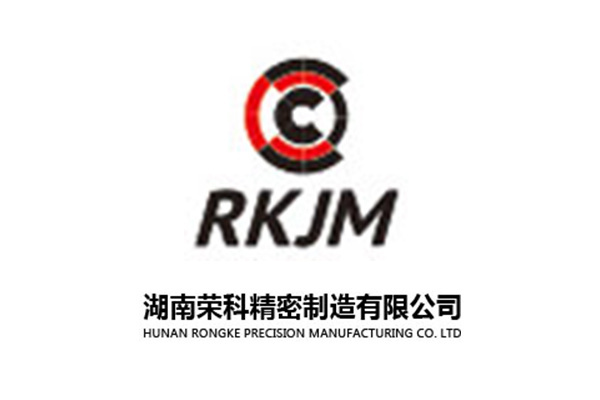Media Information
MEDIA INFORMATION
People-oriented integrity first, development and innovation, cooperation and win-win
Analysis of Die Finishing Control
Category: Industry News
2024-02-02
1. Introduction
A mold is composed of many parts, the quality of the parts directly affects the quality of the mold, and the final quality of the parts is guaranteed by finishing, so it is important to control the finishing.
In most of the domestic mold manufacturing enterprises, the method used in the finishing stage is generally grinding, electrical processing and fitter processing. At this stage to control the deformation of parts, internal stress, shape tolerance and dimensional accuracy and many other technical parameters, in the specific production practice, the operation is more difficult, but there are still many effective experience and methods worth learning.
2. Process control of mold finishing
Mold parts processing, a general guiding ideology is for different materials, different shapes, different technical requirements for adaptive processing, it has a certain degree of plasticity, through the control of processing, to achieve good processing effect.
According to the different appearance and shape of the parts, the parts can be roughly divided into three categories: shaft, plate and special-shaped parts. The common technological process is roughly as follows: rough machining-heat treatment (quenching, quenching and tempering)-fine grinding-electric machining-fitter (surface treatment)-assembly processing.
2.1. Heat treatment of parts
The heat treatment process of the parts, while making the parts obtain the required hardness, it is also necessary to control the internal stress to ensure the stability of the parts during processing. Different materials have different processing methods. With the development of the mold industry in recent years, the types of materials used have increased. In addition to Cr12, 40Cr, Cr12MoV, and cemented carbide, new materials can be used for some convex and concave molds with high work intensity and harsh stress. Powder alloy steel, such as V10, ASP23, etc., such materials have high thermal stability and good organizational state.
For parts made of Cr12MoV, quenching treatment is carried out after rough machining. After quenching, there is a large residual stress in the workpiece, which is easy to cause cracking in finishing or work. After quenching, parts should be tempered while hot to eliminate quenching stress. The quenching temperature is controlled at 900-1020 ℃, then cooled to 200-220 ℃ and discharged from the furnace for air cooling, and then quickly returned to the furnace for tempering at 220 ℃. This method is called a hardening process, which can obtain higher strength and wear resistance. The effect is better for molds with wear as the main failure form. In the production, some workpieces with many corners and complex shapes are encountered. Tempering is not enough to eliminate quenching stress. Stress relief annealing or multiple aging treatments are required before finishing to fully release stress.
For V10, APS23 and other powder alloy steel parts, because they can withstand high temperature tempering, secondary hardening process can be adopted during quenching, quenching at 1050-1080 ℃, then tempering at 490-520 ℃ for many times, which can obtain higher impact toughness and stability, and is very suitable for dies with chipping as the main failure form. The cost of powder alloy steel is high, but its performance is good, and it is forming a trend of widespread use.
Grinding of 2.2 and parts
There are three main types of machine tools used in grinding: surface grinding machines, internal and external grinding machines and tool grinding tools. When finishing grinding, it is necessary to strictly control the grinding deformation and the generation of grinding cracks, even if it is a very small crack, it will be exposed in the subsequent processing and use. Therefore, the feed of fine grinding should be small, not large, the coolant should be sufficient, and the parts with dimensional tolerance within 0.01mm should be ground at constant temperature as much as possible. From the calculation, it can be seen that for 300mm long steel parts, when the temperature difference is 3 ℃, the material changes by about 10.8μm, 10.8=1.2 × 3 × 3 (deformation 1.2 μm/℃ per 100mm), and the influence of this factor should be fully considered in each finishing process.
It is very important to choose the right grinding wheel for fine grinding. According to the high vanadium and high molybdenum conditions of mold steel, GD single crystal corundum grinding wheel is more suitable. When processing hard alloy and materials with high quenching hardness, diamond grinding wheel with organic binder is preferred. The organic binder grinding wheel has good self-grinding ability, and the grinding workpiece can reach Ra = 0.2 μm. In recent years, with the application of new materials, CBN grinding wheel, that is, the cubic boron nitride grinding wheel shows a very good processing effect, in the CNC molding mill, coordinate grinding machine, CNC internal and external grinding machine finishing, the effect is better than other types of grinding wheel. Grinding, pay attention to timely dressing the grinding wheel, keep the grinding wheel sharp, when the grinding wheel passivation, will be on the surface of the workpiece sliding, extrusion, resulting in workpiece surface burns, reduced strength.
Most of the processing of plate parts are processed by surface grinding machine, and a long and thin sheet part is often encountered in the processing, which is difficult to process. Because during processing, under the adsorption of magnetic force, the workpiece deforms and clings to the surface of the worktable (see fig. 1). when the workpiece is taken off, the workpiece will recover and deform. the thickness measurement is consistent, but the parallelism cannot meet the requirements. the solution can be to adopt the magnetic separation grinding method (see fig. 2). during grinding, the workpiece is padded with equal height blocks, the four blocks are used to resist death, and the small feed during processing, multi-light knife, after processing a good side, can no longer pad contour block, direct adsorption processing, which can improve the grinding effect, to meet the parallelism requirements.
Shaft parts with rotary surface, its processing is widely used inside and outside grinding machine and tool grinding machine. In the process of processing, the head frame and the top are equivalent to the bus. If there is a runout problem, the processed workpiece will also produce this problem, which will affect the quality of the parts. Therefore, the head frame and the top detection should be done well before processing. When grinding the inner hole, the coolant should be fully poured into the grinding contact position to facilitate the smooth discharge of grinding. Machining thin-walled shaft parts, it is best to use the clamping process table, the clamping force can not be too large, otherwise it is easy to produce "inner triangle" deformation on the circumference of the workpiece.
2.3, electrical machining control
Modern mold factory, can not lack of electric processing, electric processing can be all kinds of special-shaped, high hardness parts processing, it is divided into two kinds of wire cutting and electric spark.
WEDM machining accuracy of ± 0.003mm, roughness Ra = 0.2 μm. At the beginning of processing, check the condition of the machine tool first, check the deionization degree of water, water temperature, verticality of the wire, tension and other factors to ensure a good processing state. Wire cutting processing is to remove the processing on a whole piece of material. It destroys the original stress balance of the workpiece and easily causes stress concentration, especially at the corners. Therefore, when R<0.2 (especially sharp corners), it should be The design department puts forward suggestions for improvement. The method of dealing with stress concentration in processing can use the principle of vector translation, leaving an allowance of about 1mm before finishing, pre-processing a rough shape, and then heat treatment, so that the processing stress is released before finishing to ensure thermal stability.
When processing the punch, the choice of the position and path of the wire should be carefully considered. As shown in fig. 3, when clamping the left end of the workpiece, it is better to choose route ① than route ②, because route ① the clamping part of the workpiece and the material is closely connected and the processing is stable. if route ② is adopted, after the first feed, the workpiece will become a hanging wall shape with poor stress, which will affect the subsequent processing. Route 3, the use of perforated thread processing, the best effect. High-precision wire cutting processing, usually cutting times for four times, can ensure the quality of parts. When processing a concave die with taper, as shown in Figure 4, in line with the position of fast and efficient, the first rough machining straight edge, the second edge taper processing, and then finish the straight edge, so that no vertical finishing of the X segment is required, only the straight edge of the cutting edge section is finished, which saves time and cost.
EDM must first make electrodes, which are coarse and fine. The finishing electrode requires good shape compliance, and it is best to use CNC CNC machine tools to complete the processing. Electrode material selection, copper electrode is mainly used for general steel processing. Cu-W alloy electrode has good comprehensive performance, especially the consumption in the processing process is obviously smaller than that of red copper. With sufficient flushing liquid, it is very suitable for processing difficult-to-process materials and finishing parts with complex cross-sectional shapes. The performance of Ag-W alloy electrode is better than that of Cu-W alloy electrode, but its high price, less resources, generally less used. When making electrodes, it is necessary to calculate the gap between the electrodes and the number of electrodes. When processing large areas or heavy electrodes, the workpiece and the electrode should be clamped firmly to ensure sufficient strength to prevent loosening of processing. During deep step processing, attention should be paid to the loss of electrodes and the arc discharge caused by poor drainage.
2.4, surface treatment and assembly
The tool marks and wear marks left on the surface of the parts during processing are the places where the stress is concentrated and the source of crack propagation. Therefore, after the processing is completed, the surface of the parts needs to be strengthened and the hidden dangers of processing can be disposed of by fitter polishing. Some edges, acute angles and orifices of the workpiece shall be blunt and R-made. Generally, the EDM surface will produce a metamorphic hardening layer of about 6-10 μm, the color is gray, the hardened layer is brittle and has residual stress. Before use, the hardened layer should be fully eliminated by polishing the surface and polishing the hardened layer.
In the process of grinding and electric machining, the workpiece will have a certain magnetization, with weak magnetic force, and it is very easy to absorb some small things. Therefore, before assembly, the workpiece should be demagnetized and the surface should be cleaned with ethyl acetate. In the process of assembly, first refer to the assembly drawing, find all parts, then list the equipment sequence of each part, list all matters needing attention, and then start to assemble the mold. Generally, the assembly starts with the guide post guide sleeve, then the mold base and the male and female mold, and then adjust the assembly of the gaps, especially the male and female mold gaps. After the assembly is completed, the mold inspection shall be carried out and the overall situation report shall be written. For the problems found, the reverse thinking method can be used, that is, from the post-process to the forward process, from finishing to rough machining, one by one inspection, until the crux of the problem is found and the problem is solved.
3. Concluding remarks
Practice has proved that good finishing process control can effectively reduce parts tolerance and scrap, and effectively improve the success rate and service life of the mold.
RELATED INFORMATION
How to effectively improve the accuracy of mold processing
With the rapid development of China's economic construction and the improvement of people's living standards, China's construction industry is developing rapidly, and the demand for aluminum profiles is increasing. Therefore, the demand for aluminum alloy extrusion die design, manufacturing and production is also increasing.
View Details




